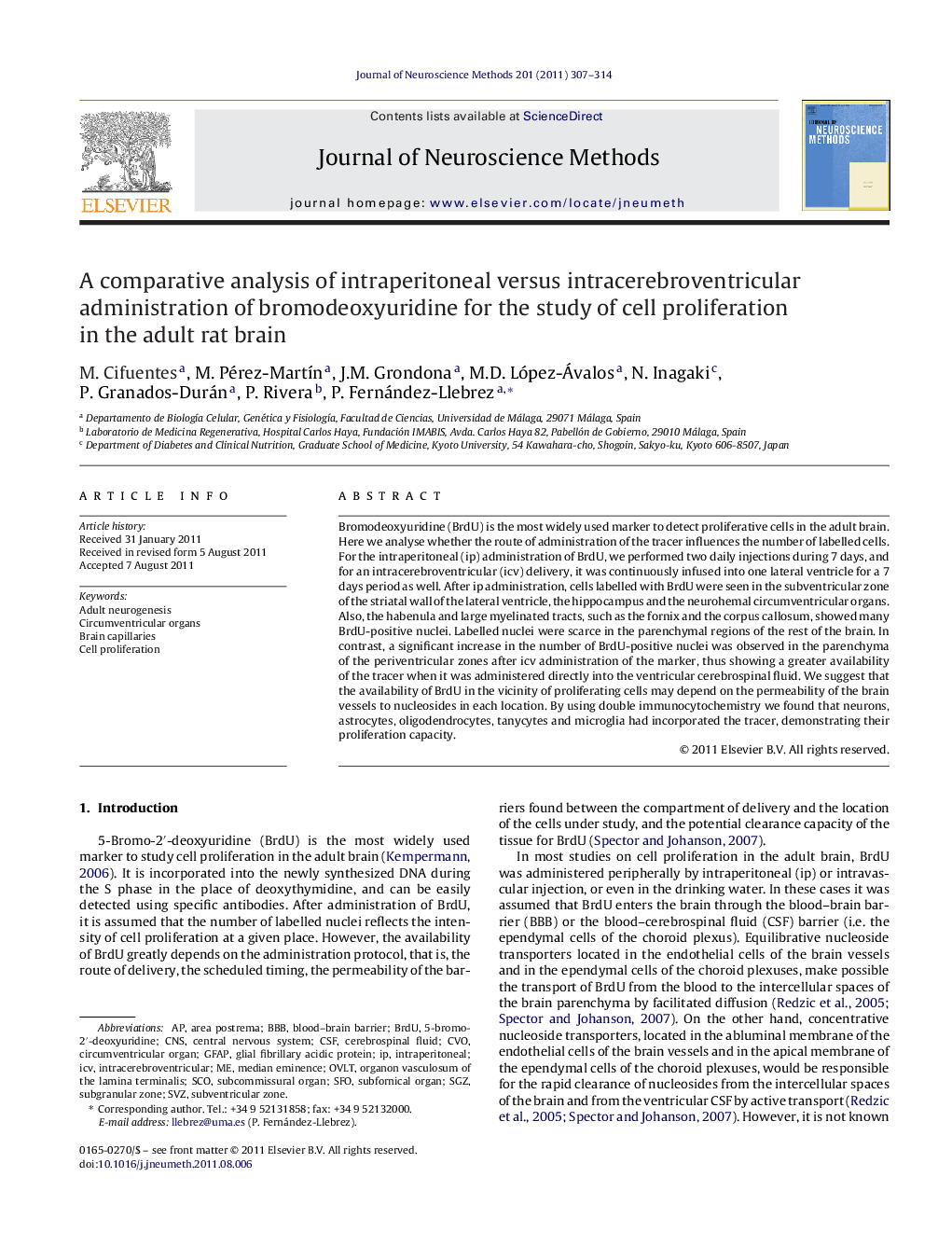| Article ID | Journal | Published Year | Pages | File Type |
|---|---|---|---|---|
| 4335329 | Journal of Neuroscience Methods | 2011 | 8 Pages |
Bromodeoxyuridine (BrdU) is the most widely used marker to detect proliferative cells in the adult brain. Here we analyse whether the route of administration of the tracer influences the number of labelled cells. For the intraperitoneal (ip) administration of BrdU, we performed two daily injections during 7 days, and for an intracerebroventricular (icv) delivery, it was continuously infused into one lateral ventricle for a 7 days period as well. After ip administration, cells labelled with BrdU were seen in the subventricular zone of the striatal wall of the lateral ventricle, the hippocampus and the neurohemal circumventricular organs. Also, the habenula and large myelinated tracts, such as the fornix and the corpus callosum, showed many BrdU-positive nuclei. Labelled nuclei were scarce in the parenchymal regions of the rest of the brain. In contrast, a significant increase in the number of BrdU-positive nuclei was observed in the parenchyma of the periventricular zones after icv administration of the marker, thus showing a greater availability of the tracer when it was administered directly into the ventricular cerebrospinal fluid. We suggest that the availability of BrdU in the vicinity of proliferating cells may depend on the permeability of the brain vessels to nucleosides in each location. By using double immunocytochemistry we found that neurons, astrocytes, oligodendrocytes, tanycytes and microglia had incorporated the tracer, demonstrating their proliferation capacity.
► We compared the number of positive nuclei when BrdU was injected ip or infused icv. ► The number of BrdU-labelled nuclei increased in the brain when it was icv infused. ► Ip- and icv-BrdU, labelled the SVZ and hippocampal dentate gyrus. ► Ip- and icv-BrdU labelled neurohemal circumventricular organs. ► Ip-BrdU labelled the habenula and certain myelinated tracts.
